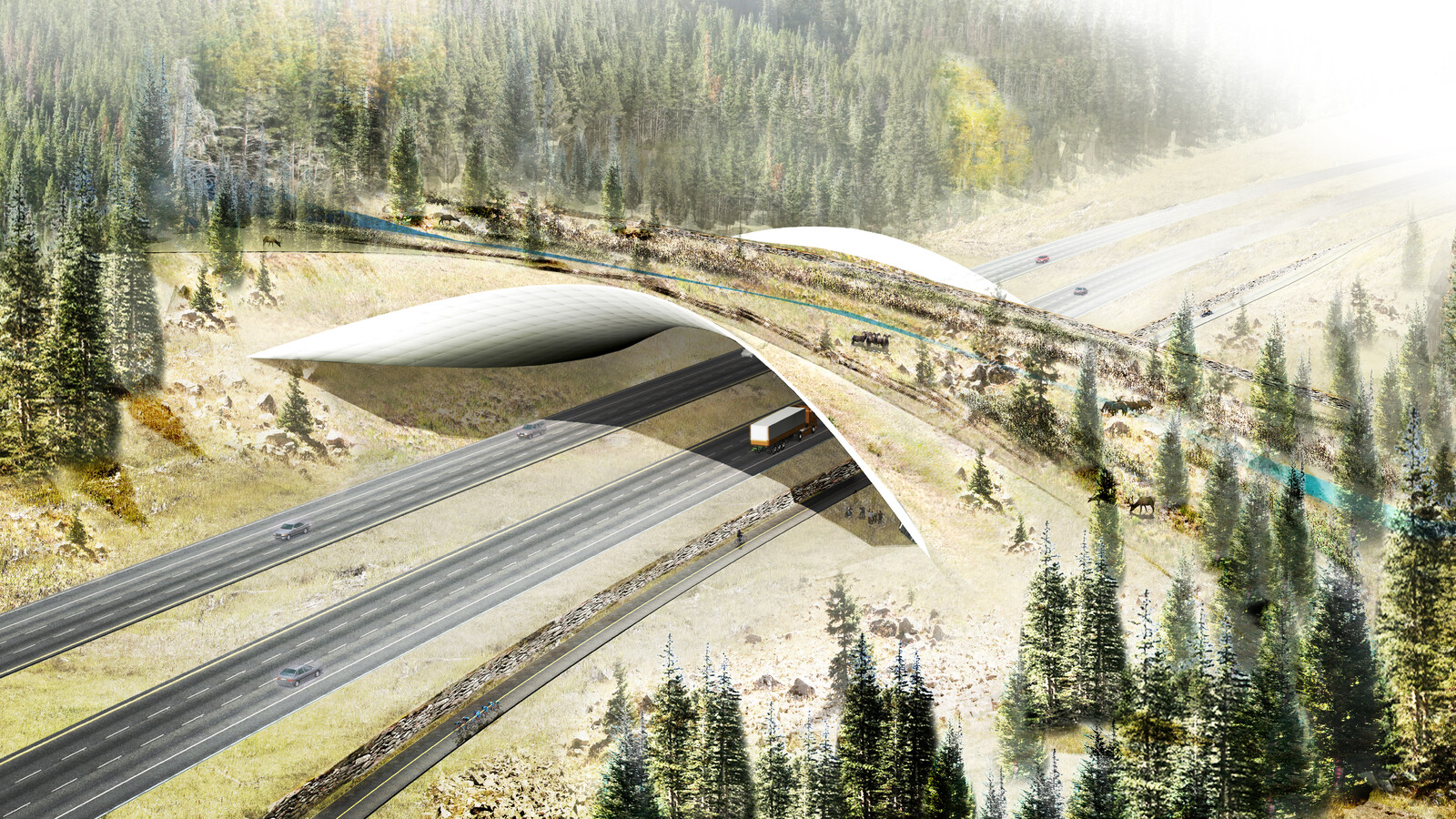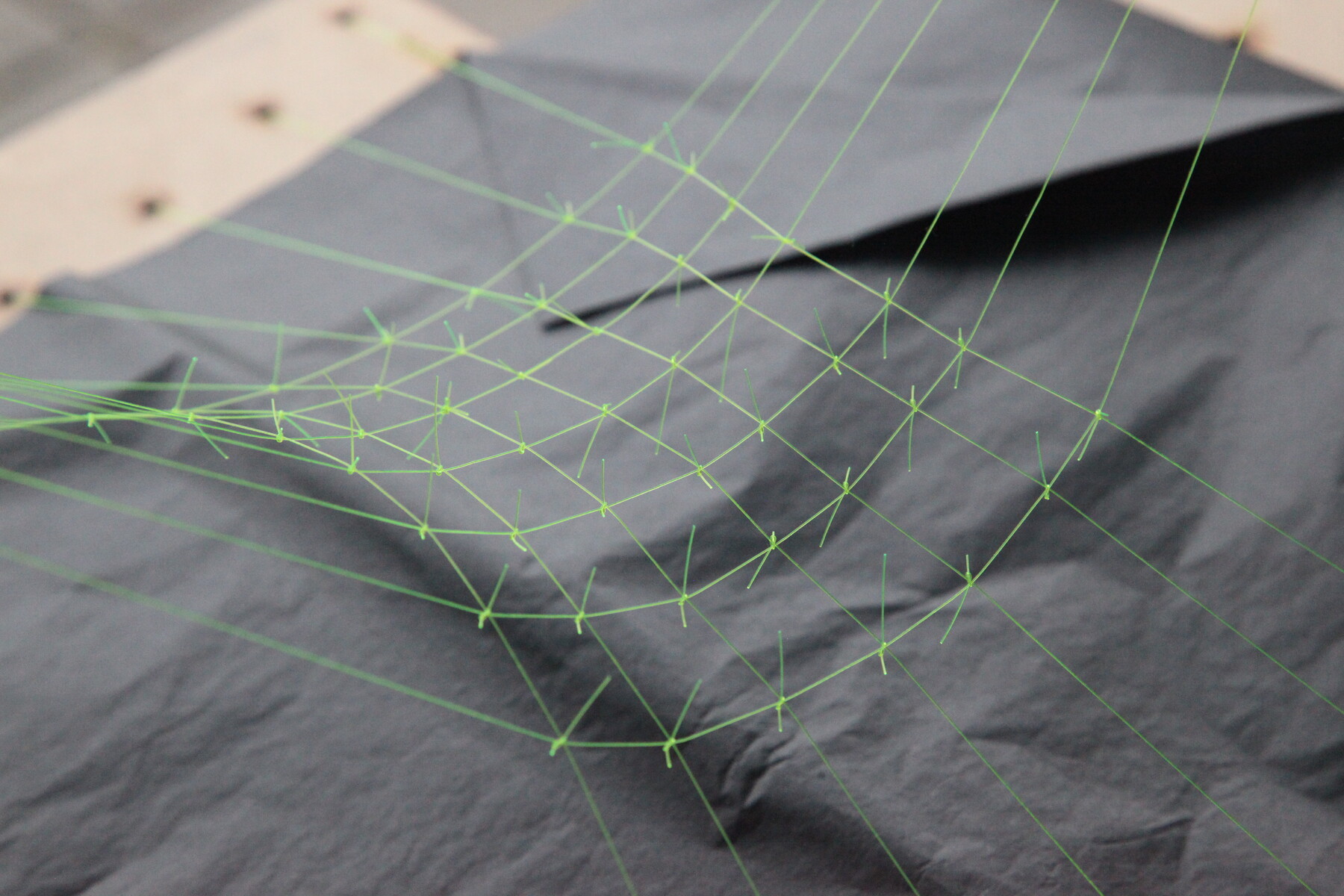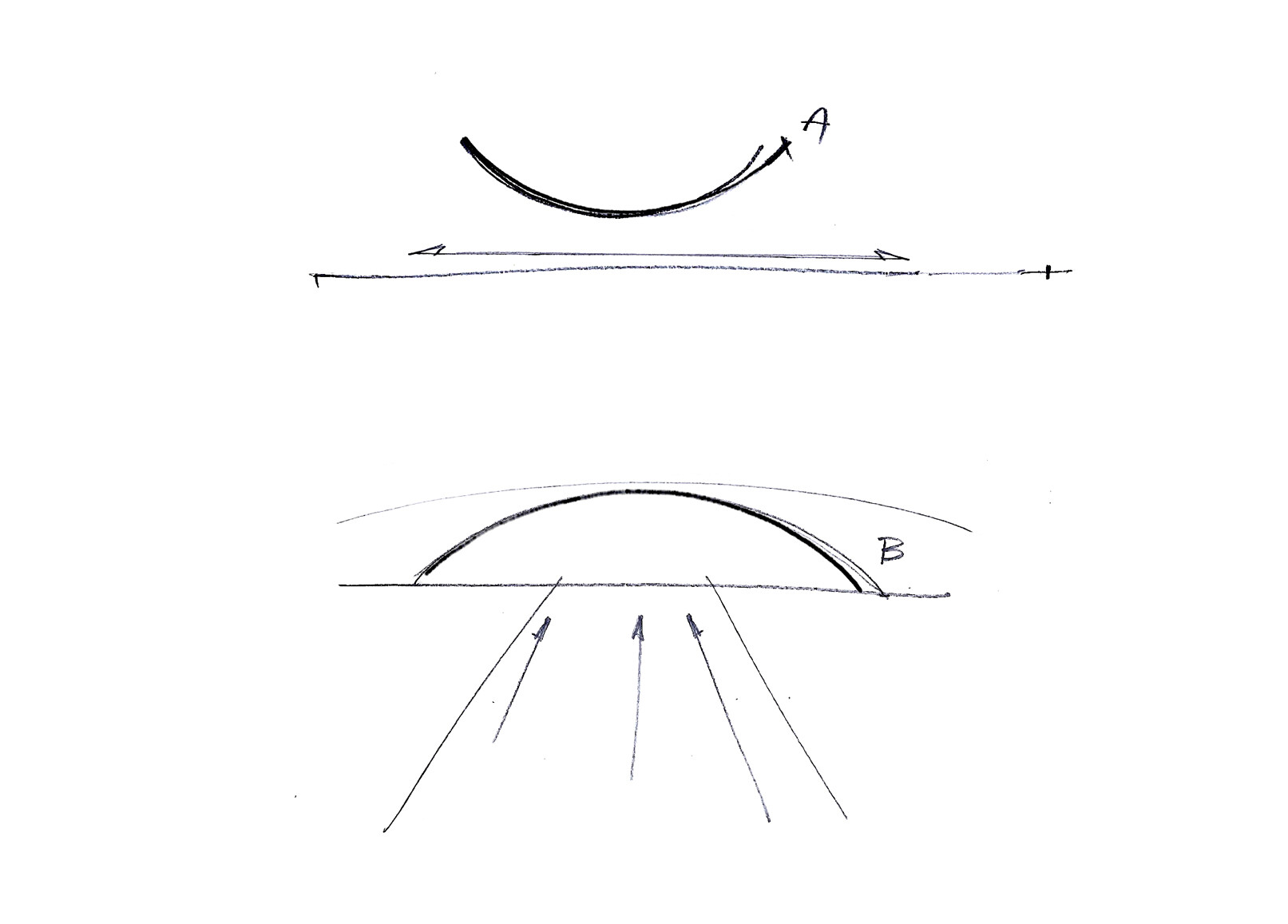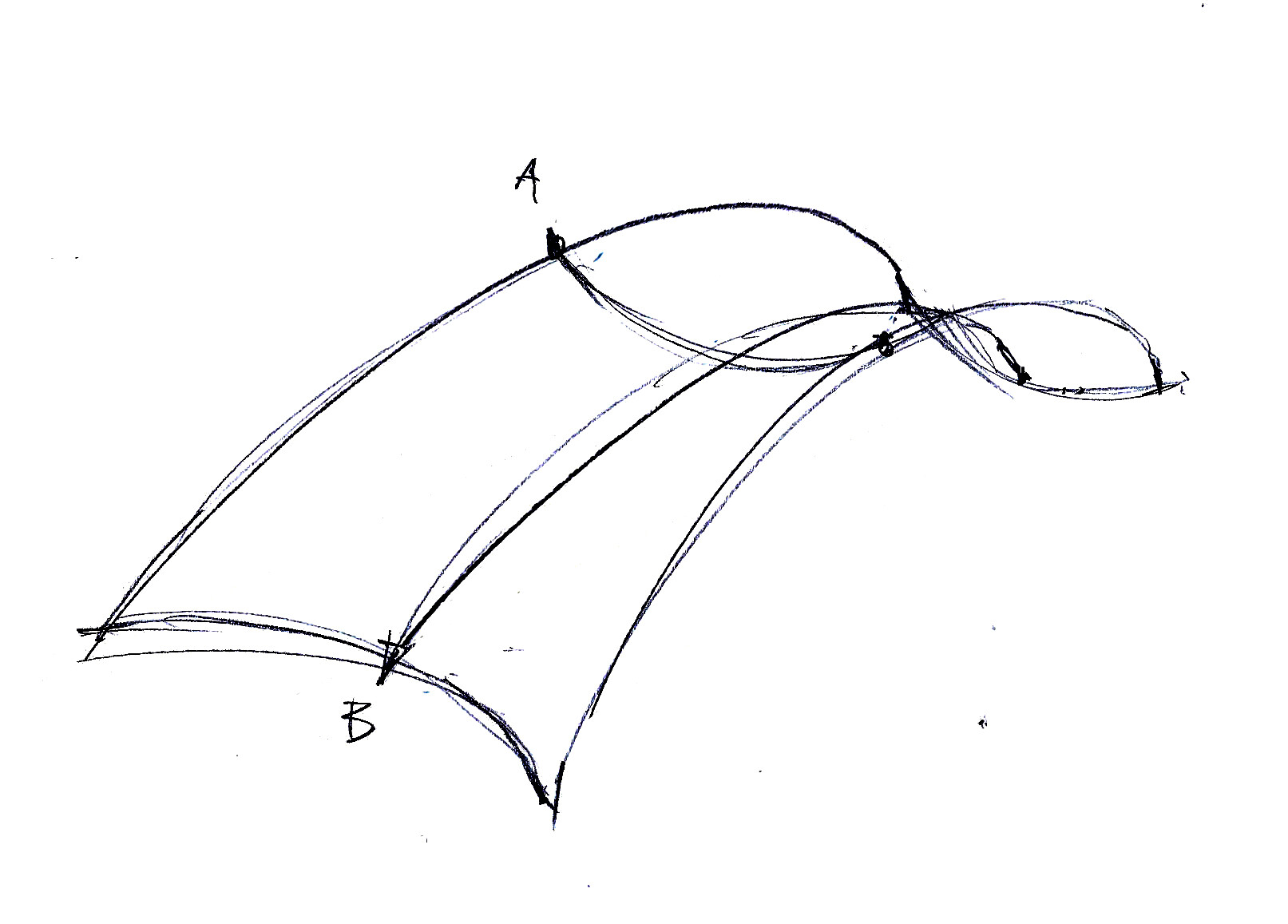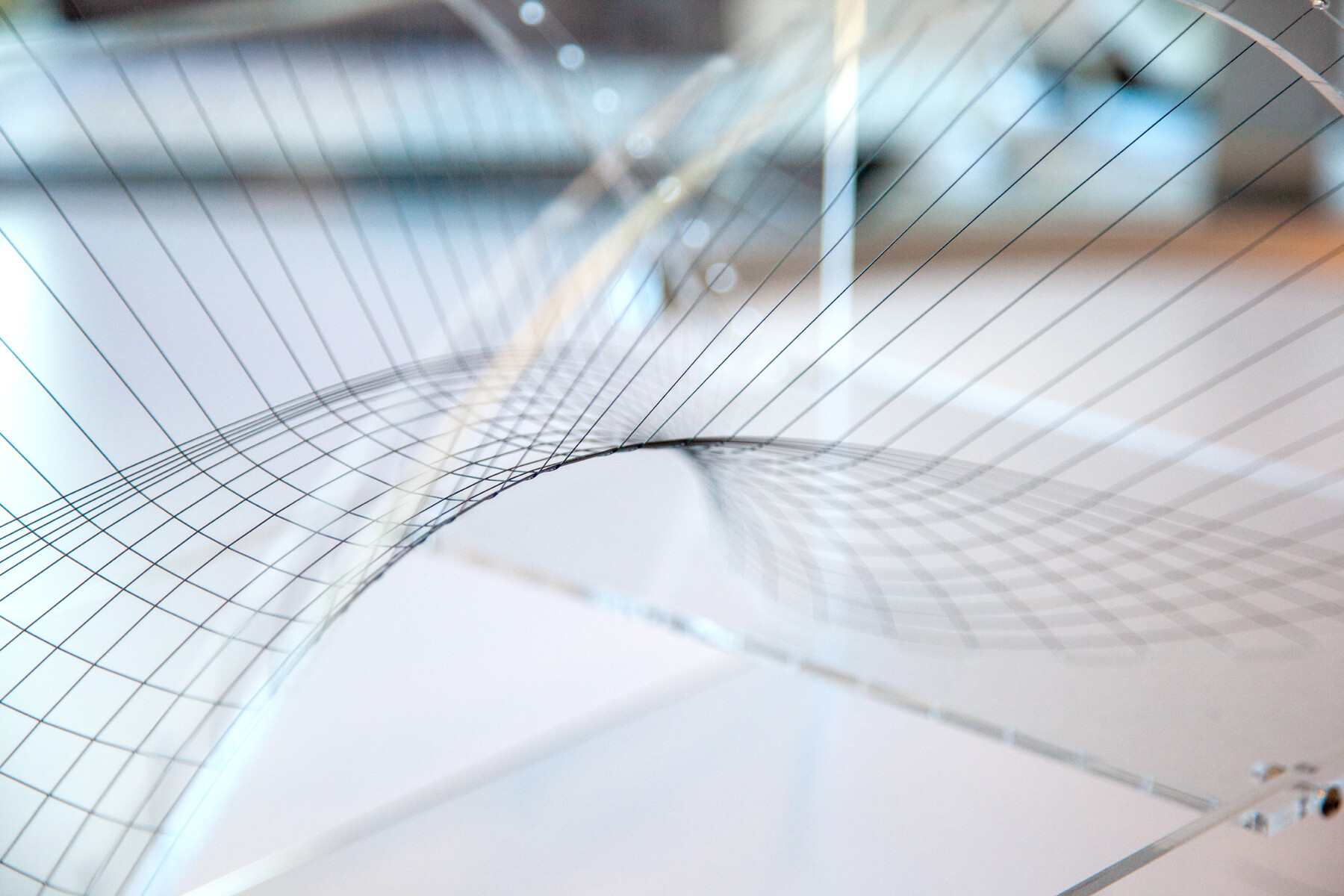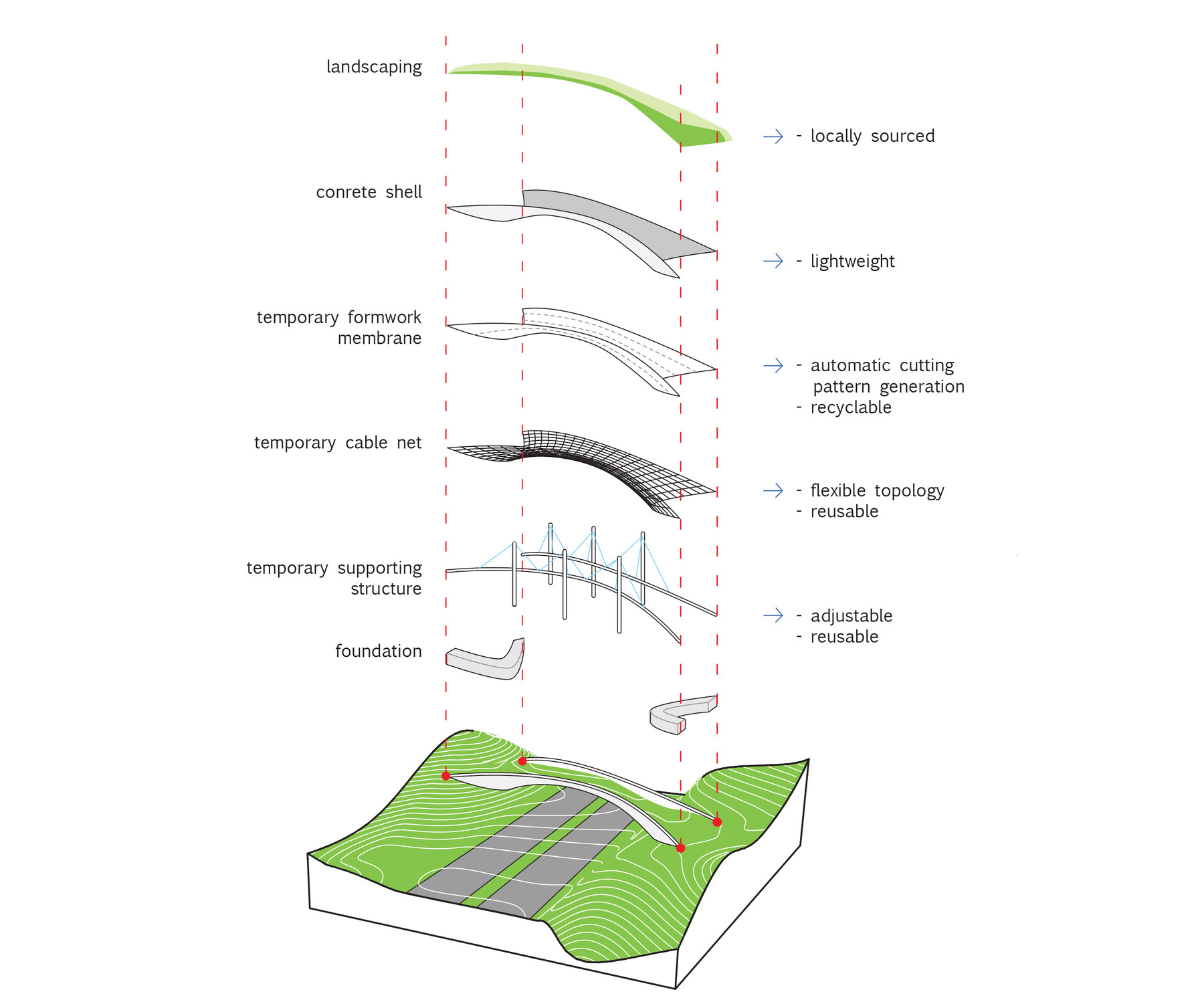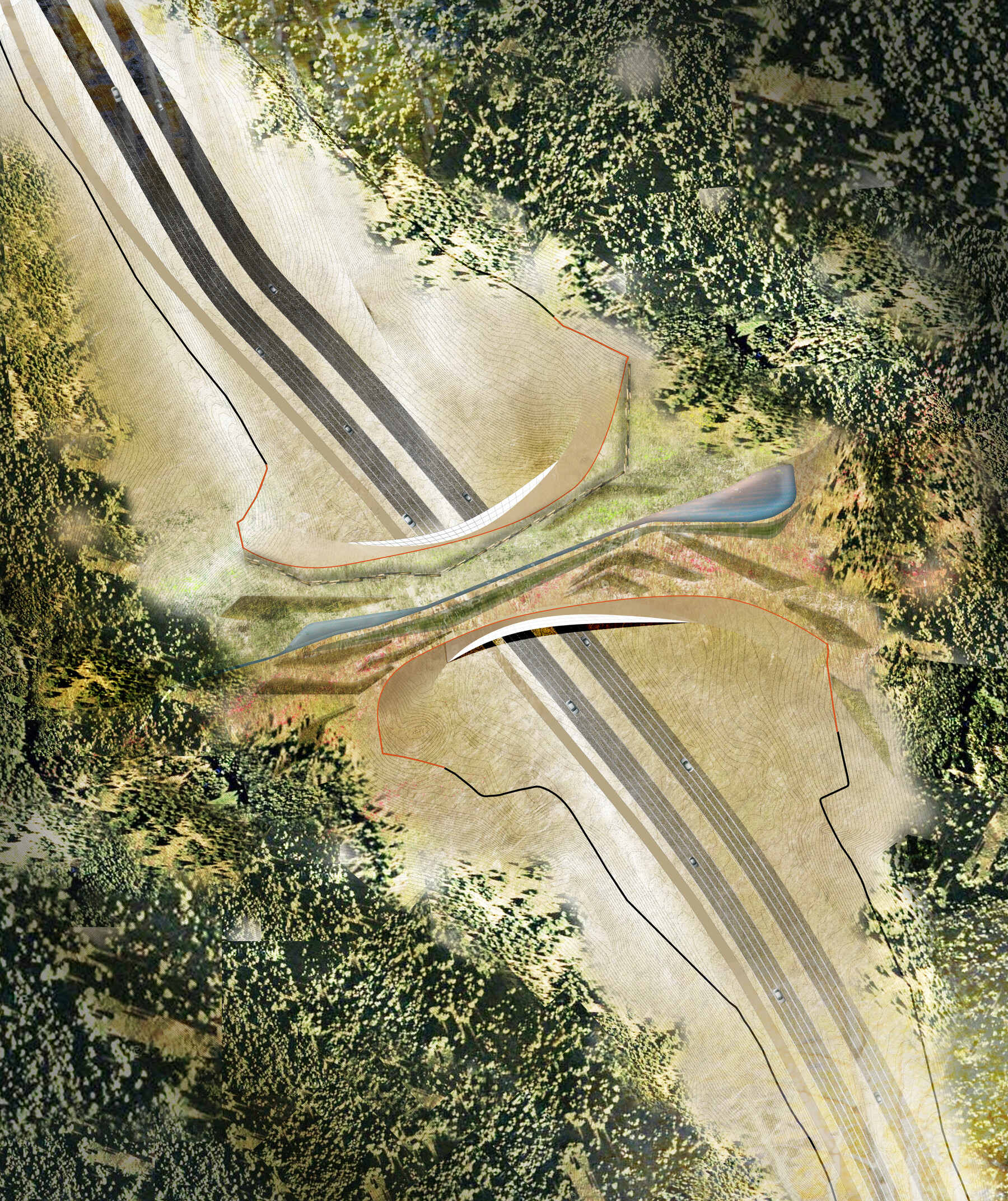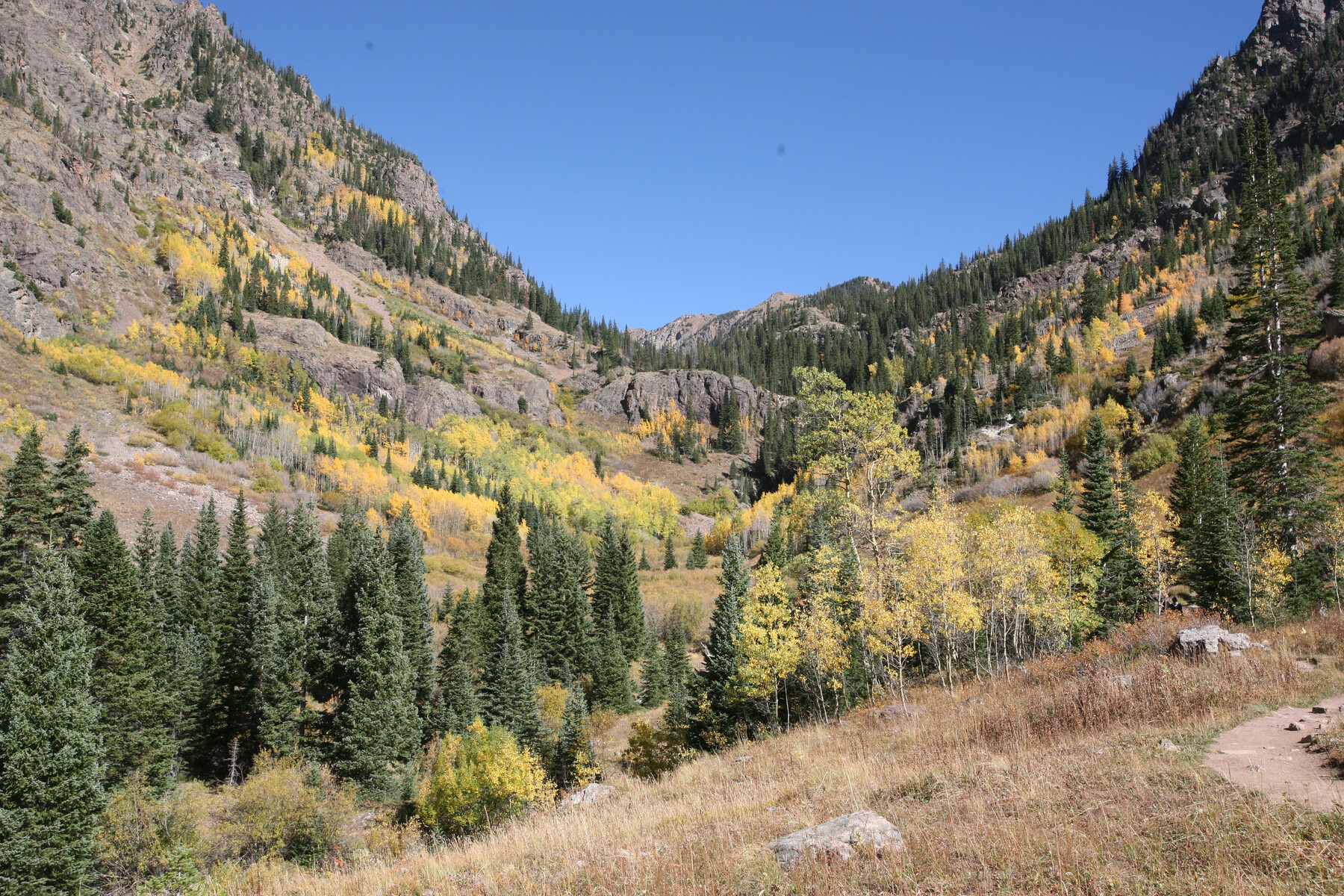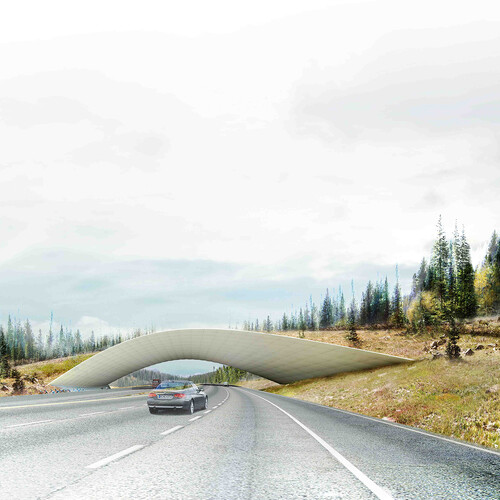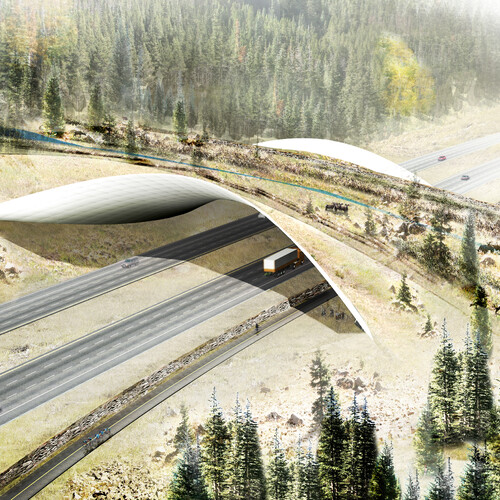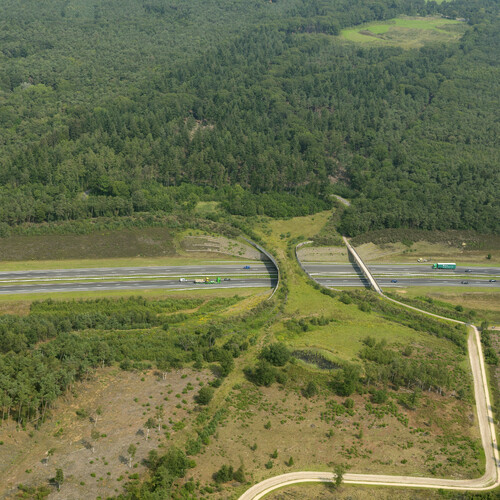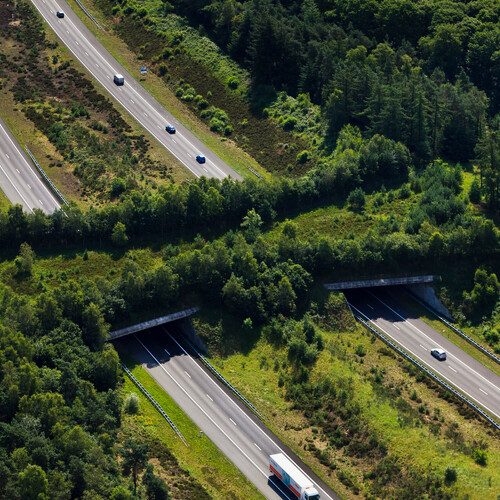The shape and the creation of the shape
The parametric model made it possible to have the design fit perfectly into the specified test location, at the foot of the Rocky Mountains, in Vail, Colorado. It had to look as though the landscape itself had chosen to fold and open out in such a way that wildlife and cars could cross each other undisturbed.
